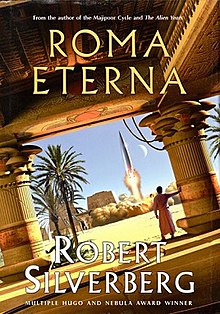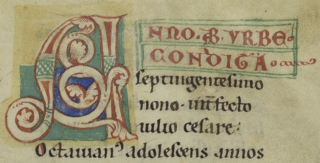
Ab urbe condita, or anno urbis conditae, abbreviated as AUC or AVC, expresses a date in years since 753 BC, the traditional founding of Rome. It is an expression used in antiquity and by classical historians to refer to a given year in Ancient Rome. In reference to the traditional year of the foundation of Rome, the year 1 BC would be written AUC 753, whereas AD 1 would be AUC 754. The foundation of the Roman Empire in 27 BC would be AUC 727. The current year AD 2023 would be AUC 2776.

Paul J. McAuley is a British botanist and science fiction author. A biologist by training, McAuley writes mostly hard science fiction. His novels dealing with themes such as biotechnology, alternative history/alternative reality, and space travel.

Harry Norman Turtledove is an American author who is best known for his work in the genres of alternate history, historical fiction, fantasy, science fiction, and mystery fiction. He is a student of history and completed his PhD in Byzantine history. His dissertation was on the period AD 565–582. He lives in Southern California.

Alastair Preston Reynolds is a British science fiction author. He specialises in hard science fiction and space opera. He spent his early years in Cornwall, moved back to Wales before going to Newcastle University, where he studied physics and astronomy. Afterwards, he earned a PhD in astrophysics from the University of St Andrews. In 1991, he moved to Noordwijk in the Netherlands where he met his wife Josette. There, he worked for the European Space Research and Technology Centre until 2004 when he left to pursue writing full-time. He returned to Wales in 2008 and lives near Cardiff.
Ian R. MacLeod is a British science fiction and fantasy writer.
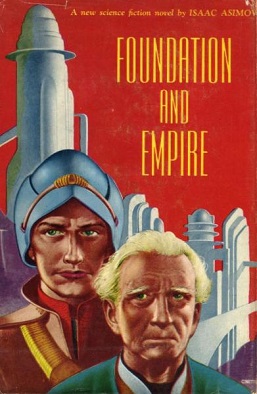
Foundation and Empire is a science fiction novel by American writer Isaac Asimov originally published by Gnome Press in 1952. It is the second book in the Foundation series, and the fourth in the in-universe chronology. It takes place in two parts, originally published as separate novellas. The second part, "The Mule," won a Retro Hugo Award in 1996.

Steven Saylor is an American author of historical novels. He is a graduate of the University of Texas at Austin, where he studied history and classics.
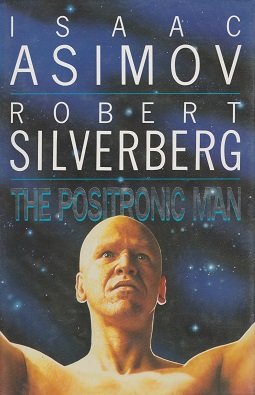
The Positronic Man is a 1992 novel by American writers Isaac Asimov and Robert Silverberg, based on Asimov's 1976 novelette "The Bicentennial Man".

The Galactic Empire is an interstellar empire featured in Isaac Asimov's Robot, Galactic Empire, and Foundation series. The Empire is spread across the Milky Way galaxy and consists of almost 25 million planets settled exclusively by humans. For over 12 millennia the seat of imperial authority was located on the ecumenopolis of Trantor, whose population exceeded 40 billion, until it was sacked in the year 12,328. The official symbol of the empire is the Spaceship-and-Sun. Cleon II was the last Emperor to hold significant authority. The fall of the empire, modelled on the fall of the Roman Empire, is the subject of many of Asimov's novels.
Kristine Kathryn Rusch is an American writer and editor. She writes under various pseudonyms in multiple genres, including science fiction, fantasy, mystery, romance, and mainstream.
Mary Rosalyn Gentle is a UK science fiction and fantasy author.
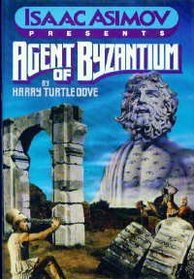
Agent of Byzantium is a 1987 collection of short stories by Harry Turtledove, centered on the exploits of Basil Argyros, a Byzantine secret agent. The stories are set in an alternate 14th century, where Islam never existed and the great ancient empires of Byzantium and Sassanid Persia survive.
"The Undiscovered" is an alternate history short story by William Sanders that won the Sidewise Award for Alternate History. It was originally published in the March 1997 issue of Asimov's and, in addition to its Sidewise Award nomination, was nominated for the Hugo Award, the Nebula Award, and the Theodore Sturgeon Award. It was subsequently reprinted in The Year's Best Science Fiction: Fifteenth Annual Collection, The Best Alternate History Stories of the 20th Century, and Best of the Best: 20 Years of the Year's Best Science Fiction.
Gillian Marucha Bradshaw is an American writer of historical fiction, historical fantasy, children's literature, science fiction, and contemporary science-based novels, who lives in Britain. Her serious historical novels are often set in classical antiquity — Ancient Egypt, Ancient Greece, the Byzantine Empire, Saka and the Greco-Bactrian Kingdom, Imperial Rome, Sub-Roman Britain and Roman Britain. She has also written two novels set in the English Civil War.
The Revelation Space series is a book series created by Alastair Reynolds. The fictional universe it is set in is used as the setting for a number of his novels and stories. Its fictional history follows the human species through various conflicts from the relatively near future to approximately 40,000 AD. It takes its name from Revelation Space (2000), which was the first published novel set in the universe.

"Sidewise in Time" is a science fiction short story by American writer Murray Leinster that was first published in the June 1934 issue of Astounding Stories. "Sidewise in Time" served as the title story for Leinster's second story collection in 1950.

List of the published work of Robert Silverberg, American science fiction author.
"Zigeuner" is a science fiction short story by Harry Turtledove, first published in the September/October issue of Asimov's Science Fiction Magazine in August, 2017. It was reprinted in The Year's Best Science Fiction: Thirty-Fifth Annual Collection, Gardner Dozois, ed. St. Martin's, 2018. It won the Sidewise Award for Alternate History for best short form work in 2017. It would also be reprinted in Turtledove's short-story collection The Best of Harry Turtledove in 2021.
"The Weight of the Sunrise" is a 2013 alternate history short story by Vylar Kaftan. It was first published in Asimov's Science Fiction in February 2013.
